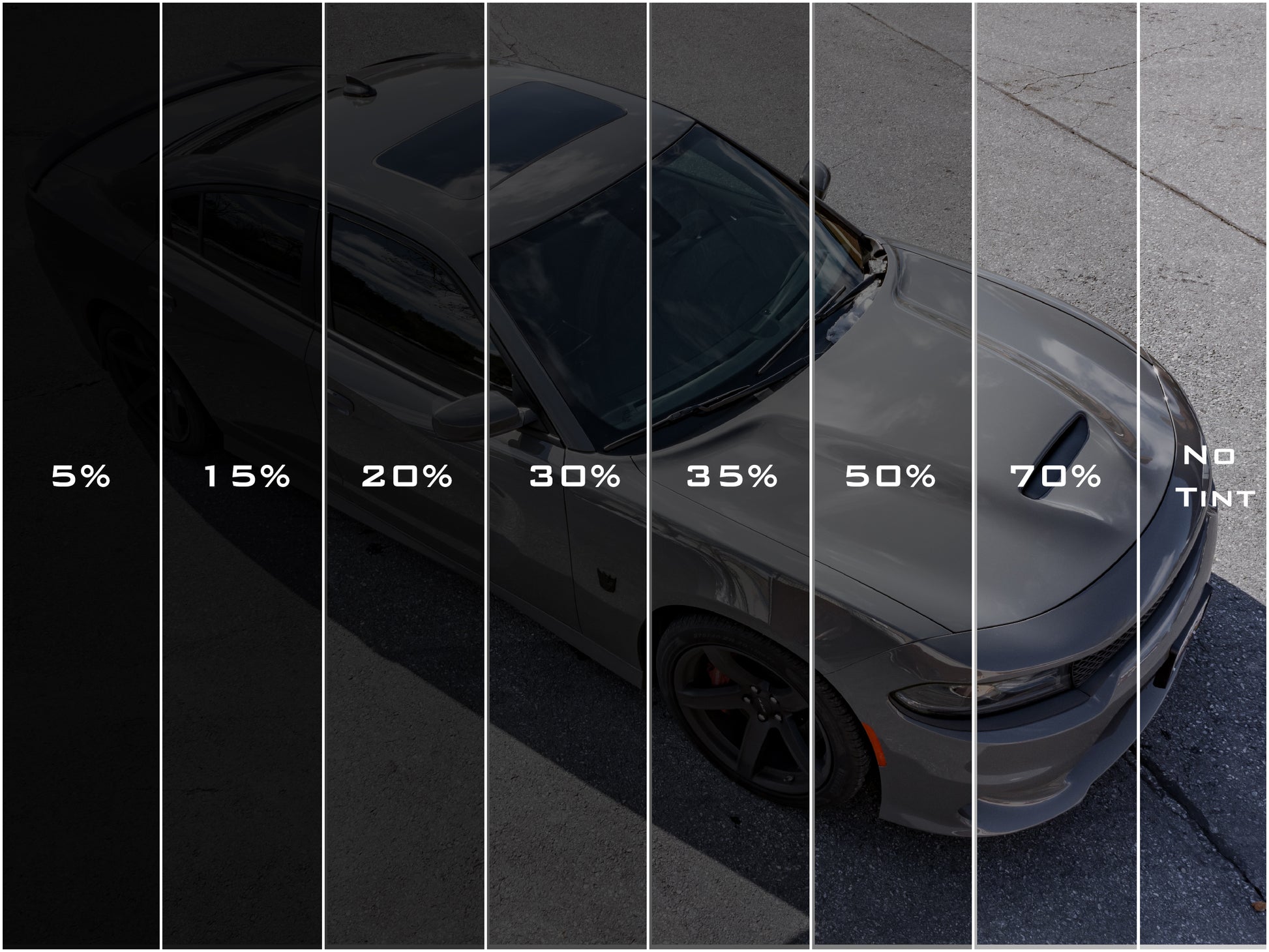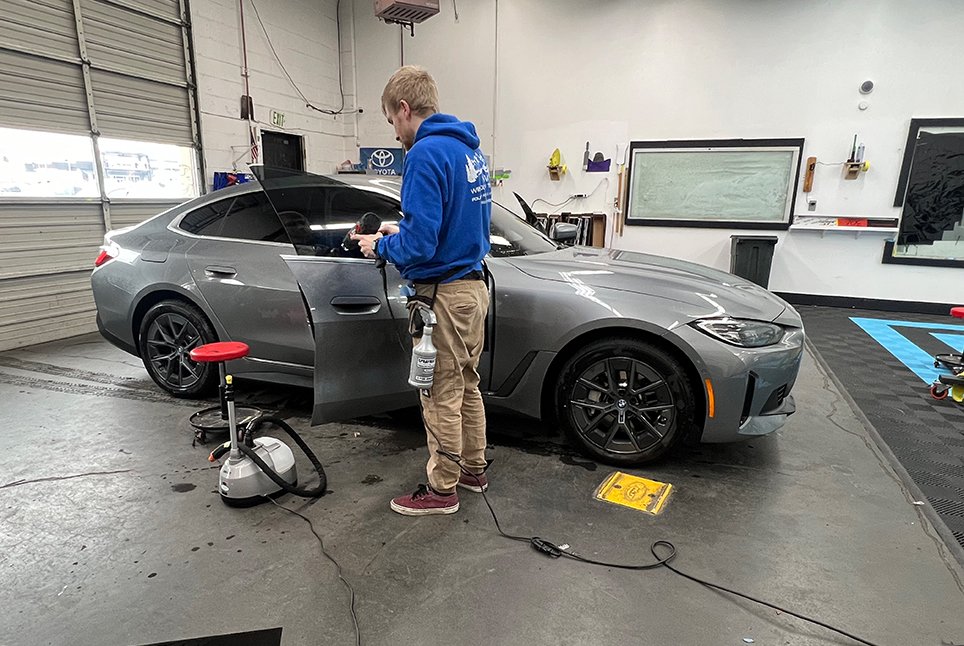Premier Car Window Tinting Providers in Your Location
Premier Car Window Tinting Providers in Your Location
Blog Article
Home Window Tinting Rules and Standards: What You Need to Know Prior To Tinting Your Cars And Truck
Before continuing with window tinting for your vehicle, it is important to familiarize yourself with the varied legislations and standards that control this practice throughout different states. These guidelines determine the allowable degrees of tint darkness, commonly measured by visible light transmission (VLT) percents, and consist of specific specifications for front windshields aimed at making sure roadway safety. In addition, specific territories might supply clinical exemptions for people with certifying conditions. Comprehending these complexities can conserve you from possible legal implications, yet what are the details policies in your state?
Introduction of Window Tinting Laws
Window tinting laws are often based on variant across different territories, mirroring regional policies and safety factors to consider. These laws determine the acceptable levels of tint darkness and reflectiveness on car home windows, making sure that drivers preserve adequate exposure while likewise safeguarding versus unsafe UV rays and warmth.
Most laws classify window tinting based on the Visible Light Transmission (VLT) percentage, which suggests the quantity of light that can go through the window. Usually, lower VLT percentages signify darker tints. Legislations typically distinguish between the front, side, and rear windows, with stricter constraints put on the front windscreen to enhance safety and security for both the vehicle driver and other road customers.
Additionally, some territories impose limitations on the reflectivity of the color, protecting against too much glare that can harm exposure. Exemptions to these laws may exist for individuals with certain clinical conditions needing extra sun security. Conformity with window tinting laws is vital, as violations can result in fines, mandatory elimination of the color, and possible increases in insurance policy premiums. As a result, it is vital for lorry owners to acquaint themselves with neighborhood regulations prior to waging window tinting installments.
State-by-State Color Regulations
Recognizing the certain home window tinting laws in each state is crucial for automobile proprietors seeking to adhere to the regulation. Each state in the united state has developed its very own collection of policies controling home window tinting, which can differ considerably. These laws commonly determine the allowed degrees of tint darkness, the types of windows that can be tinted, and any type of clinical exemptions that might apply.
For example, states like California have stringent limitations on tint darkness for front windows, while others, such as New Mexico, may enable darker tints. Additionally, particular states mandate particular presence percents for numerous windows, including the windshield, front side home windows, and rear windows. It is essential for vehicle owners to acquaint themselves with their state's regulations to prevent potential penalties or fines.
Additionally, some states might need an accreditation sticker label to be positioned on tinted home windows, indicating conformity with state legislations. Failure to follow these guidelines not just risks lawful consequences yet can likewise impact safety and security and visibility while driving. Vehicle proprietors need to conduct thorough study or speak with regional authorities to guarantee full understanding and conformity with state-by-state color guidelines.
Allowed Tint Types and levels
Lots of lorry proprietors might be surprised to discover that permitted tint levels and types vary widely across different states. Each state has actually established its very own laws concerning the acceptable darkness and reflectivity of home window tint, frequently measured by Visible Light Transmission (VLT) percentages. VLT describes the amount of light that can go through the colored windows; therefore, a reduced other percentage suggests a darker tint.

Moreover, the kinds of color products enabled can vary, with some states forbiding metal or mirror-like surfaces. It is crucial for vehicle proprietors to acquaint themselves with their state's specific regulations to ensure conformity. Non-compliance can result in penalties, obligatory elimination of the tint, or other lawful consequences, making it vital to comprehend these policies prior to waging installation.
Medical Exceptions for Tinting
While not all states give allowances for medical exceptions relating to home window tinting, those that do recognize the necessity for certain individuals to enhance presence and convenience as a result of medical conditions. Numerous clinical conditions, such as lupus, skin cancer, and specific eye disorders, can make individuals especially sensitive to sunshine. Consequently, these people might call for darker tints to safeguard themselves from damaging UV rays and glare.

It is crucial to keep in mind that despite having a medical exemption, there might still be constraints on the visit homepage level of tint allowed. Compliance with state legislations makes certain that individuals are both secured and within legal limitations. Those considering medical exemptions should contact their local Department of Electric motor Vehicles or equal authority to comprehend the requirements and procedures needed to make an application for an exemption efficiently.
Charges for Non-Compliance
Falling short to abide by home window tinting legislations can cause considerable penalties, which differ by state. Legislation enforcement agencies are empowered to release citations for automobiles that do not stick to the defined tinting regulations. These fines typically include penalties, which can range from modest total up to several hundred dollars, relying on the severity of the violation and the state concerned.
In some jurisdictions, duplicated offenses might lead to rising fines or additional penalties, such as required court appearances. Non-compliance might necessitate the elimination of unlawful tinting, often at the proprietor's expenditure. In extreme situations, habitual culprits may deal with suspension of their car enrollment till compliance is attained.
In addition, insurance policy implications might emerge from getting multiple citations for home window tint offenses. Insurers may view such violations as a sign of riskier behavior, potentially resulting in raised costs or difficulty in insurance coverage.
To prevent these charges, it is important for automobile owners to familiarize themselves with their neighborhood window tinting legislations and ensure that their vehicle complies (Window Tinting). This aggressive method not only stays clear of lawful implications but also promotes roadway safety
Conclusion

A lot of laws identify window tinting based on the Visible Light Transmission (VLT) percentage, which suggests the amount of light that can pass through the window. Conformity with home window tinting regulations is critical, as violations can result in fines, required removal of the color, and prospective boosts in insurance costs.Recognizing the specific home window tinting guidelines in each state is essential for lorry proprietors looking for to comply with the law. These laws typically dictate the allowed degrees of color darkness, the types of windows that can be tinted, and any clinical exemptions that might use.
For instance, states like California have rigid restrictions on color darkness for front windows, while others, such as New Mexico, might allow darker colors.
Report this page